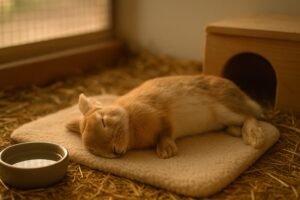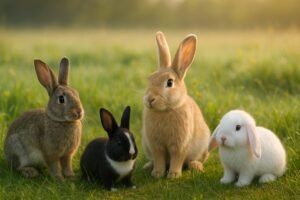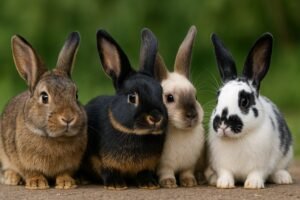Are you intrigued by the world of giant rabbits? These large, fluffy creatures can make excellent pets and are a topic of fascination for many. In this blog post, we will take a journey through the world of giant rabbit breeds, exploring their origins, traits, care requirements, and how to choose the right breed for you. Let’s hop into the fantastic world of giant rabbits!
Short Summary
Giant rabbit breeds have a long history and are known for their large size, docile nature, and appealing appearance.
Caring for giant rabbits requires adequate housing space with enrichment items as well as an appropriate diet adjusted to caloric needs.
When choosing a giant breed it is important to consider one’s living situation, experience level, and personal preferences in order to make the best decision.
Understanding Giant Rabbit Breeds

Giant rabbits have captured the hearts of many, particularly the Flemish Giant Rabbit, which is considered the largest rabbit breed in the world. These gentle giants are not alone in their category, as there are approximately five recognized large rabbit breeds, including the Checkered Giant, Giant Angora, French Lop, and Giant Chinchilla. They all share the same species, but they have been bred for different purposes, from farm animals to show-quality companions.
It’s no secret that large rabbits, such as giant rabbits, are much larger than their smaller counterparts. For example, the Flemish Giant can weigh over 20 pounds. Despite their size, giant rabbit breeds are generally docile, making them excellent pets.
Now, let’s dive deeper into the origin and history of these gentle giants.
Origin and History of giant rabbits
The origin of giant rabbits goes back to their initial purpose as farm animals. They were bred for their fur and meat, but over time, they have transitioned to become popular companions. The Flemish Giant, for instance, has its roots in 16th-century Belgium, where it was originally bred for its fur and meat.
Today, most giant rabbit breeds are more widely kept as pets, and their popularity continues to grow. With their impressive size and unique appearances, these rabbits have become sought-after companions for rabbit enthusiasts worldwide.
But what do these gentle giants have in common when it comes to their traits?
Common traits of giant rabbit breeds
While each giant rabbit breed has its distinct characteristics, they all share some common traits, such as their size, physical appearance, and disposition. For example, the Flemish Giant can reach up to 30 inches in length and typically weigh between 15 and 22 pounds. Giant Angora rabbits, on the other hand, must weigh at least 9.5 pounds for senior bucks and 10 pounds for senior does to be considered “giant”.
Despite their imposing size, giant rabbits are generally known for their docile nature, making them excellent pets. These gentle giants are often described as “couch potatoes,” as they enjoy lounging around and being close to their caregivers.
Now that we have a basic understanding of giant rabbit breeds, let’s take a closer look at some of the most popular ones.
A Closer Look at Popular Giant Rabbit Breeds
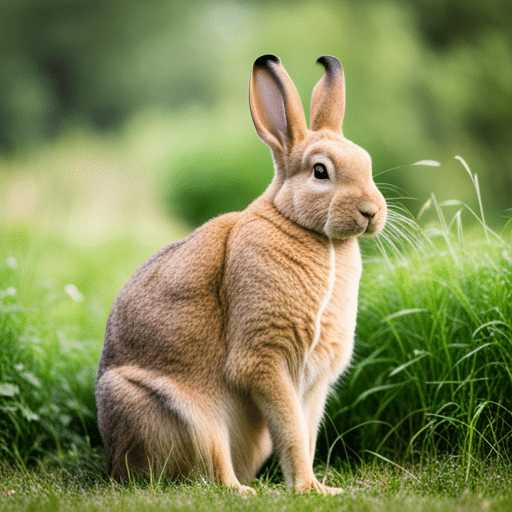
In this section, we will delve deeper into the intriguing world of popular giant rabbit breeds, including the Flemish Giant, Checkered Giant, Giant Angora, French Lop, and Giant Chinchilla. Each of these breeds has its unique characteristics, care requirements, and suitability as pets.
Let’s explore each of these fascinating breeds in the world in more detail.
Flemish Giant Rabbit
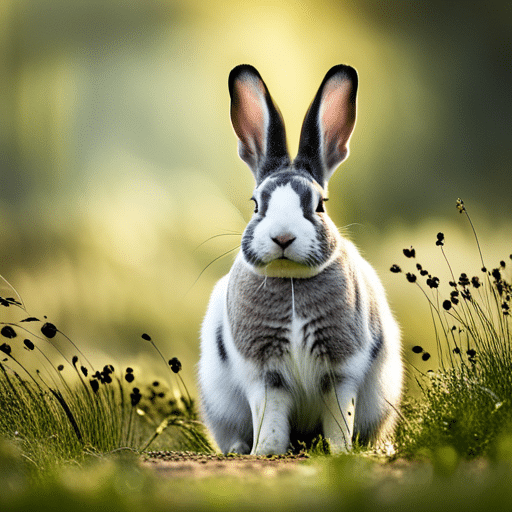
The Flemish Giant is the largest rabbit breed globally, and the Flemish Giant rabbit breed can weigh up to and occasionally surpass 20 pounds. These gentle giants originated in 16th-century Belgium and were initially bred for their fur and meat. Despite their size, the Flemish Giants are known for their docile disposition and make excellent pets, including the popular flemish giant rabbits.
Flemish Giants come in seven distinct colors and require a significant amount of space, a considerable food budget, and ample time for care due to their size. If you’re looking for a rabbit that will turn heads and make a statement, the Flemish Giant may be the perfect fit for you.
Checkered Giant Rabbit
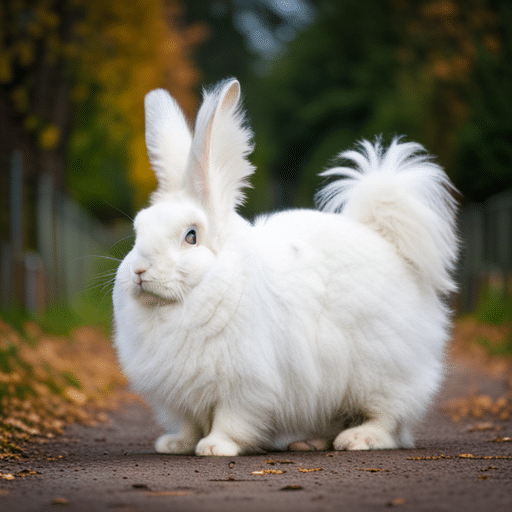
The Checkered Giant Rabbit is another large breed characterized by a long body and limbs. The origin of this breed is uncertain, but some speculate it was developed from a cross between a Flemish Giant and a Lop. Checkered Giants are known for their distinct black markings, including a black circle of fur around each eye, a butterfly-shaped black spot over their nose, and a black stripe down their back.
These rabbits are active and energetic, requiring ample exercise and space to thrive. Checkered Giants are known for their curious and friendly disposition, making them ideal pet for families with enough space to accommodate their needs. They typically have a lifespan of 5 to 6 years.
Giant Angora Rabbit
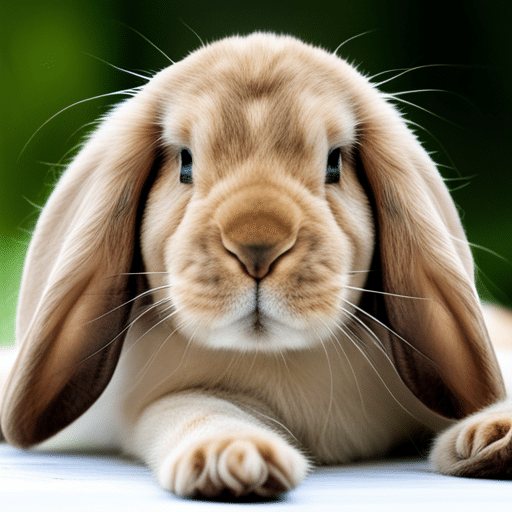
The Giant Angora Rabbit is known for its sizeable proportions and a thick coat of wool. It is the largest of the American Rabbit Breeders Association (ARBA)-recognized Angora breeds, capable of reaching a weight of up to 10 pounds. These rabbits have long, floppy ears and a short, thick neck, with fur typically white or cream-colored.
Giant Angora rabbits have unique grooming requirements due to their long fur. Regular brushing, at least once a week, is necessary to maintain their coat in a healthy condition and prevent the formation of knots. Bathing should also be undertaken regularly to keep their coat clean and free of dirt and other particles.
French Lop Rabbit
French Lop rabbits are friendly, cuddly, and often mistaken for Flemish Giants due to their size. They have a commercial body type, short straight front legs, hind legs that are in alignment with the body, a bulky physique, and a large head with a broad forehead and full cheeks. Their ears are long and floppy, typically ranging between 5 and 8 inches long beneath the jawline.
The French Lop breed was developed in France during the 1800s through a combination of an English Lop and a Butterfly rabbit. Although they may not be the best choice for first-time rabbit owners due to their higher needs than a smaller bunny, French Lops can make wonderful pets for those with experience.
Giant Chinchilla Rabbit
The Giant Chinchilla rabbit was developed in the United States in 1921 by Edward H. Stahl, characterized by its soft, dense, blue-grey fur coat and a soft white underbelly. This breed has a large body with long, upright ears and is known for its gentle nature.
The distinctive coloring of the Giant Chinchilla’s fur resembles a chinchilla, giving the breed its name. These rabbits make great pets for those looking for a unique and gentle giant to add to their family. With proper care, they can bring joy and companionship to their loving homes.
Caring for Giant Rabbit Breeds

Caring for giant rabbit breeds requires a good understanding of their unique needs. Although they are the same species as smaller rabbits, their size and characteristics necessitate particular care requirements.
In this section, we will explore housing, diet, and health considerations for these gentle giants, ensuring they live happy and healthy life.
Housing and space requirements
Giant rabbits require ample space to engage in hopping and unrestricted movement. Their enclosures should be at least 12 square feet, providing enough room for them to exercise and explore. The cage must be at least 24” high, 30” deep, and 48” wide. Wire-bottom crates or cages should be avoided, as they can cause sore hocks to develop on the rabbit’s feet.
Ensuring a comfortable living space for your giant rabbit also requires keeping their environment clean and providing fresh water and food. Soft mats should be placed at the bottom of their enclosures, and toys or hiding spots should be included to keep them entertained.
Dietary needs of giant rabbits

A proper diet is essential for the health and well-being of giant rabbits. They require a diet primarily consisting of hay and grass, with a smaller portion of pellets and fresh vegetables. Hay should constitute at least 70% of their diet, with the remainder being composed of fresh greens and pellets. Sweet fruits and vegetables should be avoided, as they can be harmful to your rabbit’s health.
Since giant rabbits have larger bodies, they require a higher caloric intake than smaller rabbits. For instance, Flemish Giants need a protein-rich diet due to their increased mass. It’s essential to monitor your rabbit’s weight and adjust their diet accordingly, ensuring they maintain a healthy weight.
Health Considerations and veterinary care
Giant rabbits may be predisposed to certain health issues compared to smaller rabbits. For example, Angora rabbits are known to be susceptible to hairballs, which can potentially result in gastrointestinal stasis or complete obstruction of the intestines. Regular vet visits are essential for giant rabbits to ensure any health problems are identified and managed accordingly.
It’s recommended that giant rabbits visit the vet at least once a year, or more often if they become elderly or experience any health issues. Providing a healthy diet, proper housing, and regular grooming will also contribute to your rabbit’s overall health and well-being.
With proper care, giant rabbits can live a happy, healthy life with their loving families.
Choosing the Right Giant Rabbit Breed for You

Selecting the perfect giant rabbit breed for your family is an exciting process that requires careful consideration of your living situation, experience level, and personal preferences. In this section, we will provide tips and guidance to help you make an informed decision and find the perfect giant rabbit breed for your home and lifestyle.
When selecting a giant rabbit breed, it is important to consider the size of the rabbit.
Assessing your living situation
When considering a giant rabbit breed, it’s crucial to assess your living situation to determine if your home can accommodate their size and needs. Ensure you have enough space for their enclosure, which should be at least 12 square feet, and provide ample room for them to exercise and explore.
Take into account the availability of food and water, as well as any restrictions your living situation might have, such as rules regarding pets in apartments or rental properties. It’s also essential to consider the amount of time you can dedicate to your rabbit’s care and socialization, as these gentle giants require love and attention to thrive.
Evaluating your experience level
Before choosing a giant rabbit breed, evaluate your experience level with rabbits. Some giant rabbit breeds, like the Flemish Giant, may be better suited for those with more extensive rabbit ownership experience. Reflect upon your prior exposure to rabbits, your willingness to learn, and your ability to provide the necessary care for a giant rabbit.
If you’re a first-time rabbit owner, consider starting with a smaller breed or a giant breed known for its docile nature, such as the French Lop or Giant Chinchilla. As you gain experience and confidence in caring for rabbits, you may decide to explore the world of giant rabbit breeds further.
Meeting potential rabbits
One of the most critical steps in choosing the right giant rabbit breed for you is meeting potential rabbits. This allows you to determine their temperament, which may differ from the behavior typically associated with their breed. It’s essential to ensure a neutral area for the meeting, monitor the interaction, and exchange toys and bedding between their enclosures so they can become accustomed to each other’s scent.
Considering the rabbit’s behavior and temperament during your meeting will help you find the perfect fit for your family. Remember that every rabbit is unique, and finding the right giant rabbit breed for you may take time and patience. With proper care and attention, your chosen giant rabbit will become a cherished member of your family.
Summary
In conclusion, the world of giant rabbit breeds is vast and fascinating. From the massive Flemish Giant to the uniquely furred Giant Angora, these gentle giants can make excellent pets with the proper care and attention. Assessing your living situation, evaluating your experience level, and meeting potential rabbits are all crucial steps in choosing the right giant rabbit breed for your family. With love, care, and commitment, these gentle giants can bring joy, companionship, and a touch of wonder to your home.
Frequently Asked Questions
What is the largest breed of rabbits?
The Flemish Giant Rabbit is widely recognized as the largest breed of rabbits, with males weighing up to 13 pounds. Bred initially for meat production, their high bone-to-meat ratio made them unsuitable for this, and instead became popular as show rabbits.
Do giant rabbits make good pets?
Giant rabbits can make delightful pets if you are prepared to provide them with the care and attention they need. They require plenty of space, ample amounts of stimulation, and a special diet.
If you are willing and able to meet these demands, then a giant rabbit could be a wonderful addition to your family.
Which is bigger Flemish or Continental?
Comparatively, Flemish Giants are bigger than Continental Giants since they have no set maximum size or weight limit.
Flemish Giants can grow to be much larger than the Continental Giants, with an average weight of up to 20 pounds.
How many recognized giant rabbit breeds are there?
Giant rabbits come in a variety of breeds, with five recognized varieties including the Flemish Giant, Checkered Giant, Giant Angora, French Lop, and Giant Chinchilla.
What are the unique grooming requirements for Giant Angora rabbits?
Giant Angora rabbits need attentive care and a consistent grooming regimen to help their fluffy coats remain tangle-free and healthy. They should be brushed at least once a week, as well as bathed regularly.

